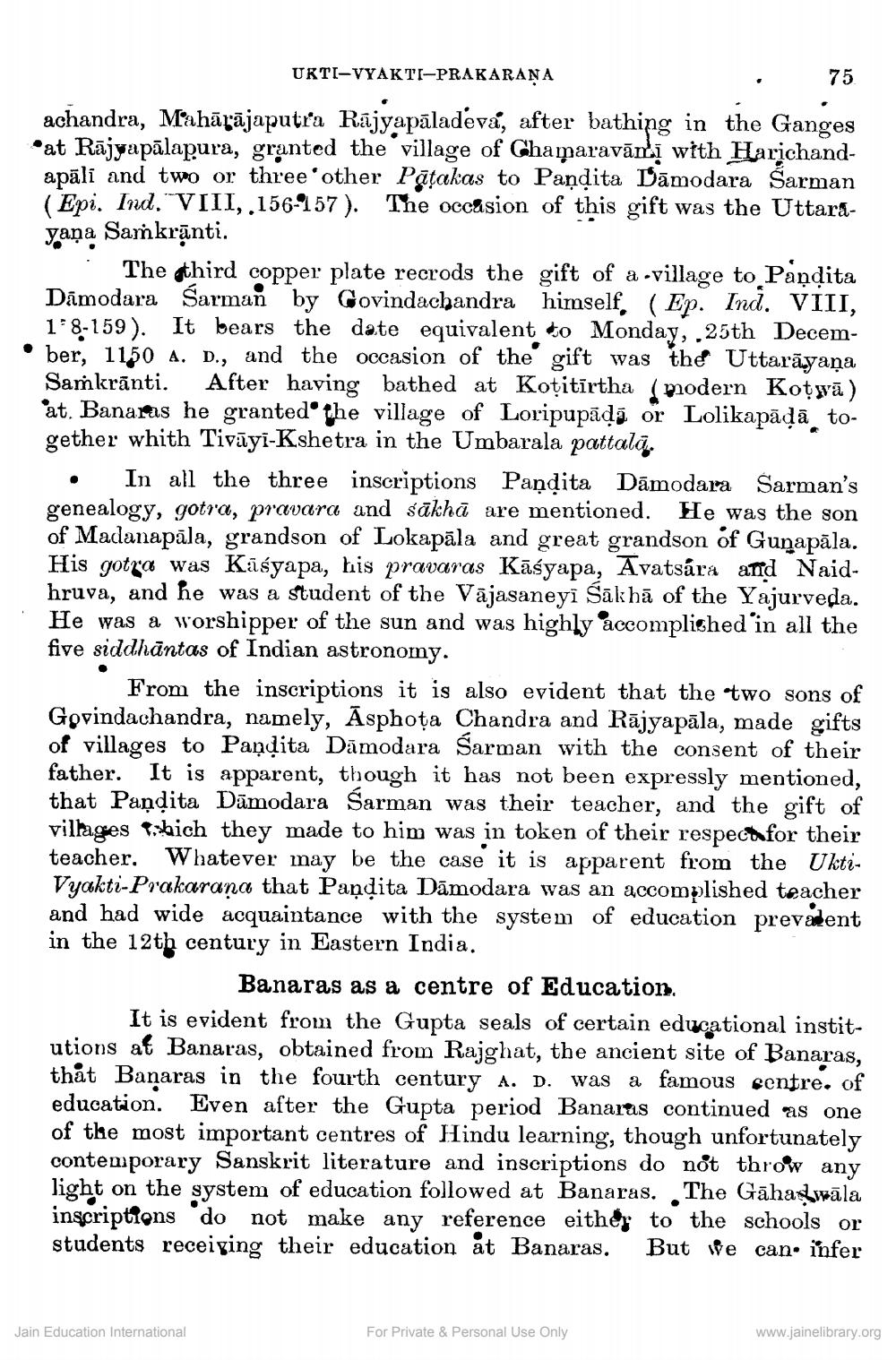________________
·
UKTI-VYAKTI-PRAKARANA
achandra, Maharajaputra Rajyapaladeva, after bathing in the Ganges at Rajyapalapura, granted the village of Chamaravami with Harichandapāli and two or three other Patakas to Pandita Damodara Sarman (Epi. Ind. VIII, .156-157). The occasion of this gift was the Uttarayana Samkrānti.
The third copper plate recrods the gift of a village to Pandita Damodara Sarman by Govindachandra himself, (Ep. Ind. VIII, 18-159). It bears the date equivalent to Monday, 25th December, 1150 A. D., and the occasion of the gift was the Uttarayana Samkrānti. After having bathed at Koțitirtha (modern Kotwa) at. Banaras he granted the village of Loripupada or Lolikapāḍā together whith Tivayi-Kshetra in the Umbarala pattala
·
In all the three inscriptions Pandita Damodara Sarman's genealogy, gotra, pravara and sakha are mentioned. He was the son of Madanapala, grandson of Lokapala and great grandson of Gunapāla. His gotra was Kasyapa, his pravaras Kasyapa, Avatsara and Naidhruva, and he was a student of the Vajasaneyi Sakha of the Yajurveda. He was a worshipper of the sun and was highly accomplished in all the five siddhantas of Indian astronomy.
•
75
From the inscriptions it is also evident that the two sons of Govindachandra, namely, Asphota Chandra and Rajyapāla, made gifts of villages to Pandita Damodara Sarman with the consent of their father. It is apparent, though it has not been expressly mentioned, that Pandita Damodara Sarman was their teacher, and the gift of villages thich they made to him was in token of their respect for their teacher. Whatever may be the case it is apparent from the UktiVyakti-Prakarana that Pandita Damodara was an accomplished teacher and had wide acquaintance with the system of education prevalent in the 12th century in Eastern India.
Banaras as a centre of Education.
It is evident from the Gupta seals of certain educational institutions at Banaras, obtained from Rajghat, the ancient site of Banaras, that Banaras in the fourth century A. D. was a famous centre. of education. Even after the Gupta period Banaras continued as one of the most important centres of Hindu learning, though unfortunately contemporary Sanskrit literature and inscriptions do not throw any light on the system of education followed at Banaras. The Gahaswala inscriptions do not make any reference either to the schools or students receiving their education at Banaras. But we can infer
Jain Education International
For Private & Personal Use Only
www.jainelibrary.org




